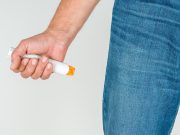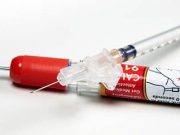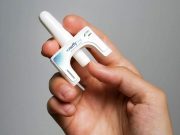Tag: Anaphylactic Shock
Study IDs Specific Anaphylactic Triggers Linked to Symptoms, Treatment
Alcohol is more likely associated with nut-induced anaphylaxis when adjusted for age at reaction, male sex
ACAAI: Many Anaphylaxis Protocols Are Incomplete, Outdated
Second study shows that only 14 percent of patients correctly identified symptoms requiring epinephrine
Modified Anaphylaxis Clinical Criteria Developed for Young Children
Modified criteria captured 98 percent of all patient encounters presenting with suspected allergic or anaphylactic reactions
Expanded Use of Xolair to Treat Food Allergies Approved by the FDA
Xolair is not meant to substitute for emergency anaphylaxis medications such as the EpiPen
Updated Guidelines Issued for Management of Anaphylaxis
Emergency medical services may not be required in case of prompt, complete, and durable response to use of epinephrine
Emergency Anaphylaxis Observation Times Can Be Cut for Children
Authors say that with further validation, most children can be discharged within two hours
FDA Panel Recommends Approval of First Nasal Spray to Combat Severe Allergic Reactions
Research included a survey showing that people would be likely to use the spray 18 minutes earlier than an injectable medication
ACAAI: Epinephrine Auto-Injector Use Low Among Adults With Food Allergy
Furthermore, one-third of adults with food allergy think epinephrine auto-injectors can cause life-threatening effects
Out-of-Pocket Costs for Epinephrine Auto-Injectors Examined
Cost-sharing still substantial for some using nonbranded auto-injectors, such as those enrolled in high-deductible health plans
Risks for Anaphylaxis Compared Among IV Iron Products
Rates of anaphylaxis low for IV iron products, but risk for anaphylaxis increased with iron dextran and ferumoxytol compared with iron sucrose














